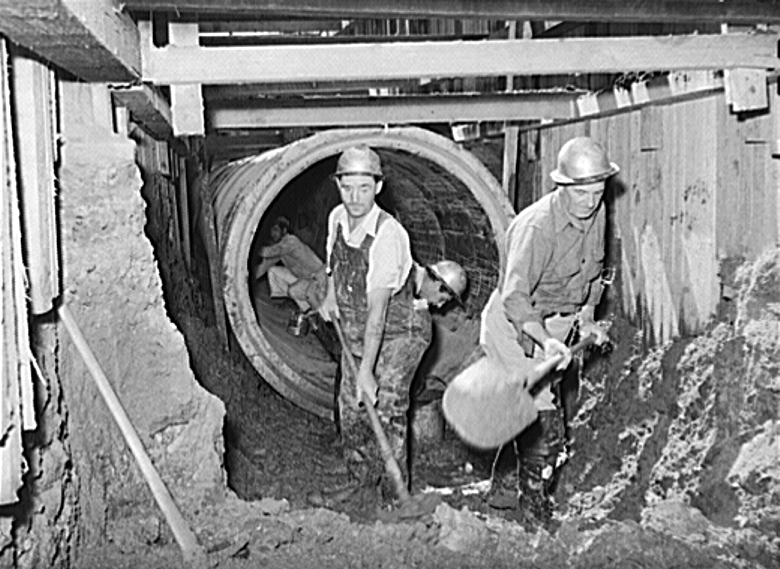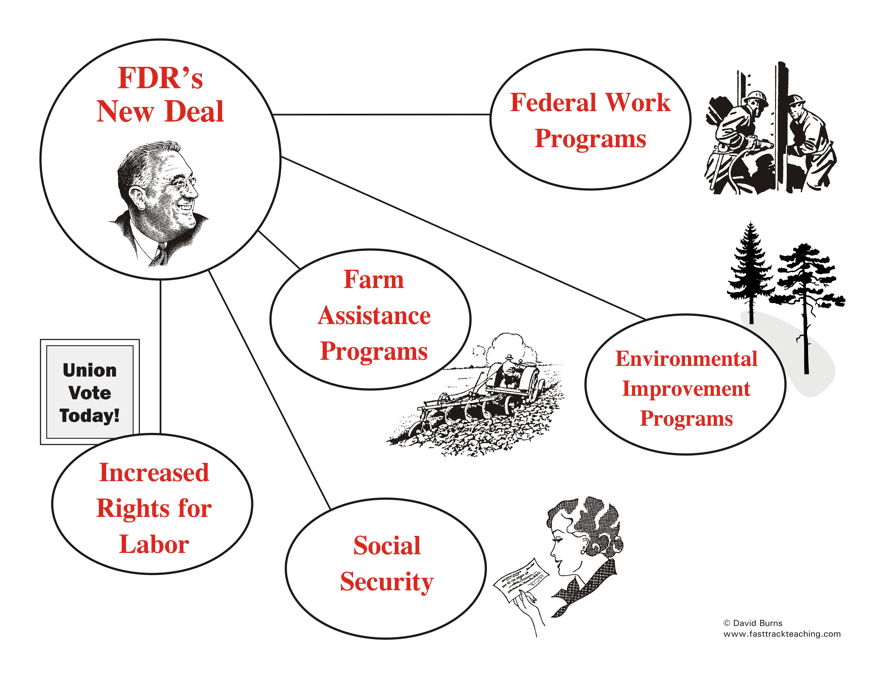The WPA
created jobs
for unemployed people The WPA - the Works Progress Administration - was a federal work program designed to create jobs during the Great Depression. The program paid for all kinds of projects that federal, state, and local leaders thought would be worthwhile. The photo below shows men working on underground pipes for a WPA sewer project for the city of San Diego, California. |
 |




